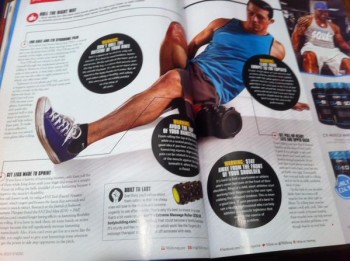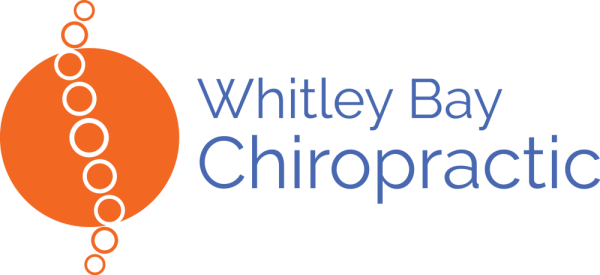Mobility Work Do’s and Don’ts
For more fitness, rehab, and wellness news, follow us on Facebook and Twitter.
Evidence
Chris Beardsley, the author of the Strength and Conditioning Research Review, gave this summary of the evidence:
“Immediately after foam rolling, flexibility increases for about 10 minutes, but how long you need to roll for or exactly how to do it is still up in the air. On the plus side, there is no evidence that athletic performance is affected by foam rolling, so we can do it before a workout if we want. Probably most interesting are the preliminary indications that foam rolling could help improve recovery and reduce muscle soreness after workouts.”

I wrote about this topic in the print edition of Train Magazine
It is ok to foam roll the ITB itself, if it decreases your localized pain
Chris Beardsley says, “The ITB is not tight and will not stretch, so don’t put yourself through the unpleasant process of foam rolling your ITB just for the sake of it. However, if you have ITB band pain or discomfort, it may help. When it comes to foam rolling, the mechanisms are still very unclear but there is some evidence that foam rolling can reduce localized pain, such as muscle soreness. It may therefore also reduce fascial pain or pain in and around the ITB as well. One theory as to why foam rolling the ITB might help with pain centers around the mechanoreceptors in the fascia, which respond to the pressure. Don’t forget it is important to strengthen and/or roll the TFL, glute maximus, quads, and hamstrings as needed.”
Roll the glutes and tensor fascia lata (TFL) to prevent knee pain
The glute max and TFL (a muscle between the crest of the ilium and the lateral hip bone) both tie into the iliotibial band (ITB). The ITB sits on the outside of the thigh, and is a thickening of the fascia lata that covers the whole thigh. Tightness of these two muscles can have a negative impact on the ITB, and cause pain on the outside of the leg just below the knee. The glutes and TFL respond well to rolling, and stretching the glutes after rolling can be beneficial.
Focus on the lats and the posterior rotator cuff muscles
Foam rolling the lats (the V shaped muscles on the sides of the back) is great if you struggle getting your arms above your head with your thumbs facing backwards. If you look like you’re permanently carrying suitcases around, your lats are probably more than a little tight. The lats responds really well to rolling, and they feels good to do. On the back of the shoulder blade sits a couple of rotator cuff muscles that are often tight in lifters. If when you hold your elbow out and your arm doesn’t rotate down as much as “normal”, then your posterior cuff is probably tight. Try rolling these muscles against a wall with a ball. Take care not to overdue it, but keeping these muscles loose can help prevent anterior shoulder problems.
Stay away from the front of the shoulder
It is hard to find a lifter who has never had anterior shoulder pain. When it is mild many a lifter will start working their fingers on to the sore spot, rubbing the tendons where it is sore. This is never a good idea. If pain persists it is best to see a health professional who can help address any muscle tightness that may be the source of the problem.
The outside of the knee has a nerve there, avoid it
You should only roll muscles, it is best to avoid tendons, bones, and nerves. On the outside of the knee just at the top of the leg is a nerve that passes over the outside leg bone. It is the most injured nerve in the body due to trauma. Not all pain when rolling is healthy, and rolling this area can produce nerve pain. Stay away for this area.
Take note when you roll the high hamstring
Foam rolling the top of the hamstring while in a seated position is not a good idea if you have a history of a high hamstring injury. High hamstring pain can be related to compression of the hamstring against the bone beneath it, when the hip is flexed. Instead, foam roll the top of the hamstrings lying down with the thigh and torso in a straight line. Focus on foam rolling the belly of the hamstring muscle as there is good deal of evidence showing that foam rolling can improve hamstring flexibility. I wrote a post on the topic of low compression high hamstring exercises.
ART Therapy
The subscapularis and serratus anterior muscles are problematic in many lifters. The nerves that pass to the arm pass along the top of the armpit, it is best to avoid this area with a blunt tool like a ball. Active Release Techniques® (ART) is a soft tissue therapy that skilled providers learn how to treat the subscapularis particularly well. A recent study found one session of hands-on ART therapy significantly increased hamstring flexibility immediately. The FAT-tool™ instrument therapy was found to have a longer lasting effect on hamstring flexibility than foam rolling.
For more fitness, rehab, and wellness news, follow us on Facebook and Twitter.
You may also like:
Articles I wrote or contributed to:
Telegraph The ART of Active Release Techniques for Injuries
STACK New Age of Golf Training is Creating Stronger and More Athletic Golfers
Athletics Weekly Performance Therapy for Greg Rutherford
220 Triathlon ART- How is it different from sports massage
Vigour Magazine ART can release tight muscles to improve performance
Progenex ART for CrossFitters
FIT Institute Research based hamstring therapies
TPI What Performance Therapy Looks Like For Top Golfers
Stronger Golf– Elbow pain and golfers
